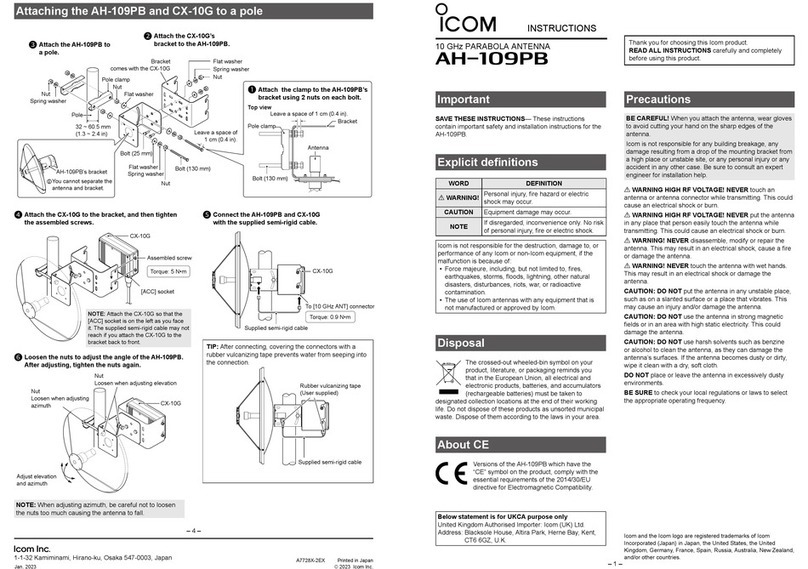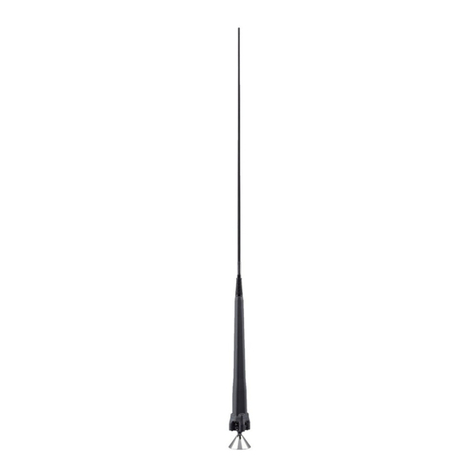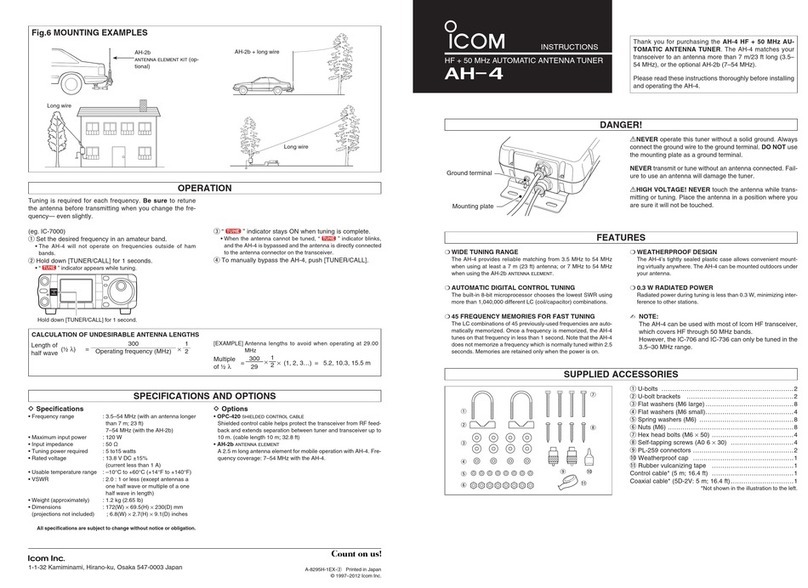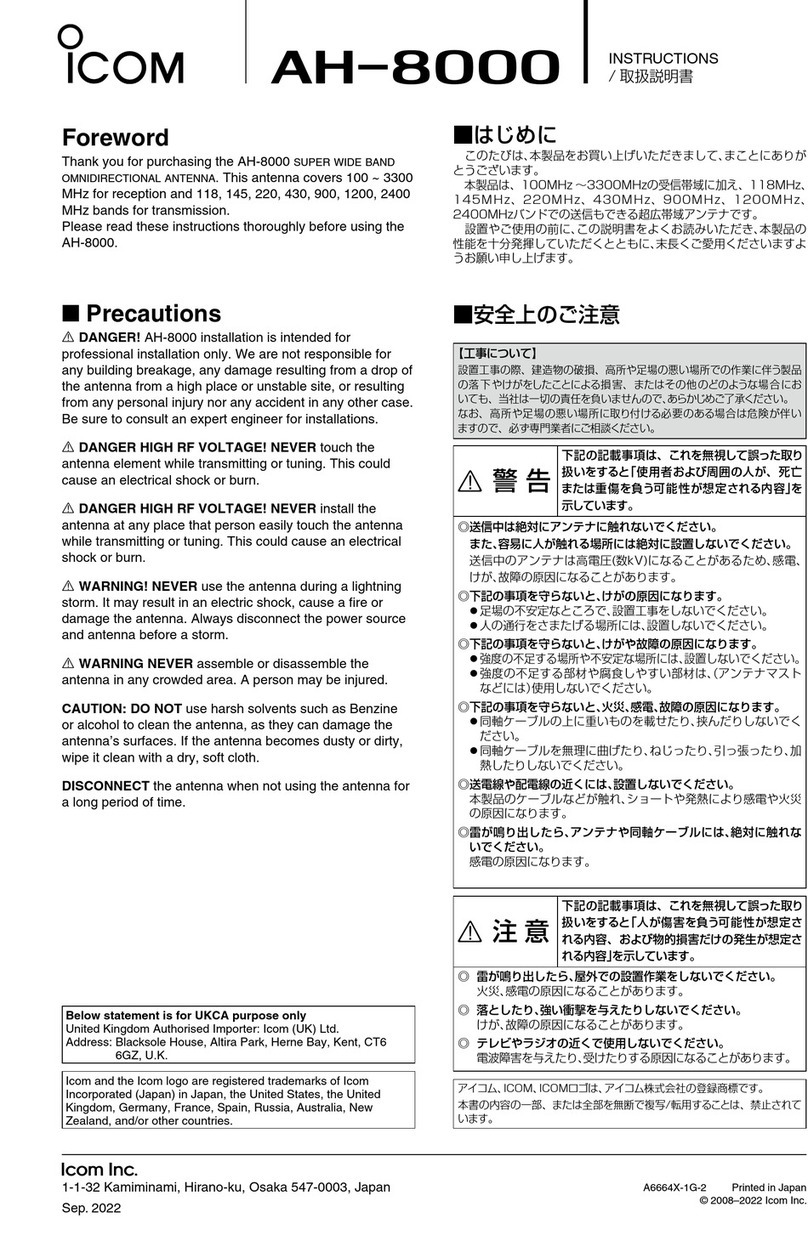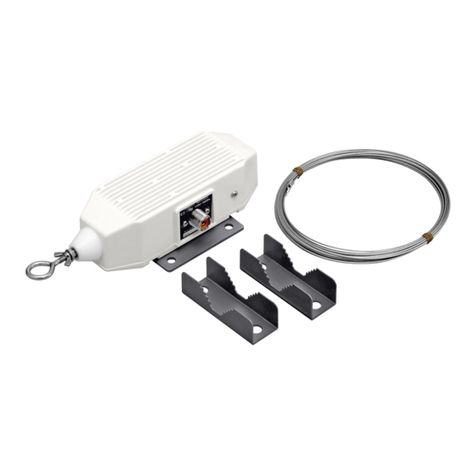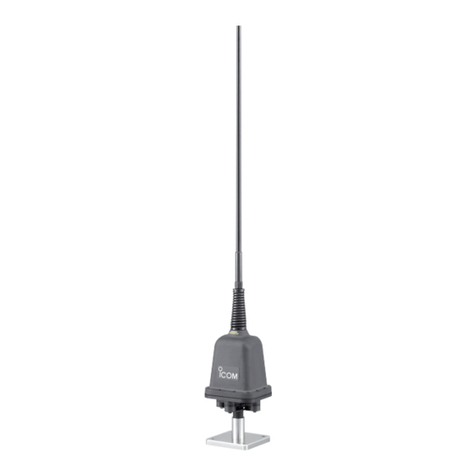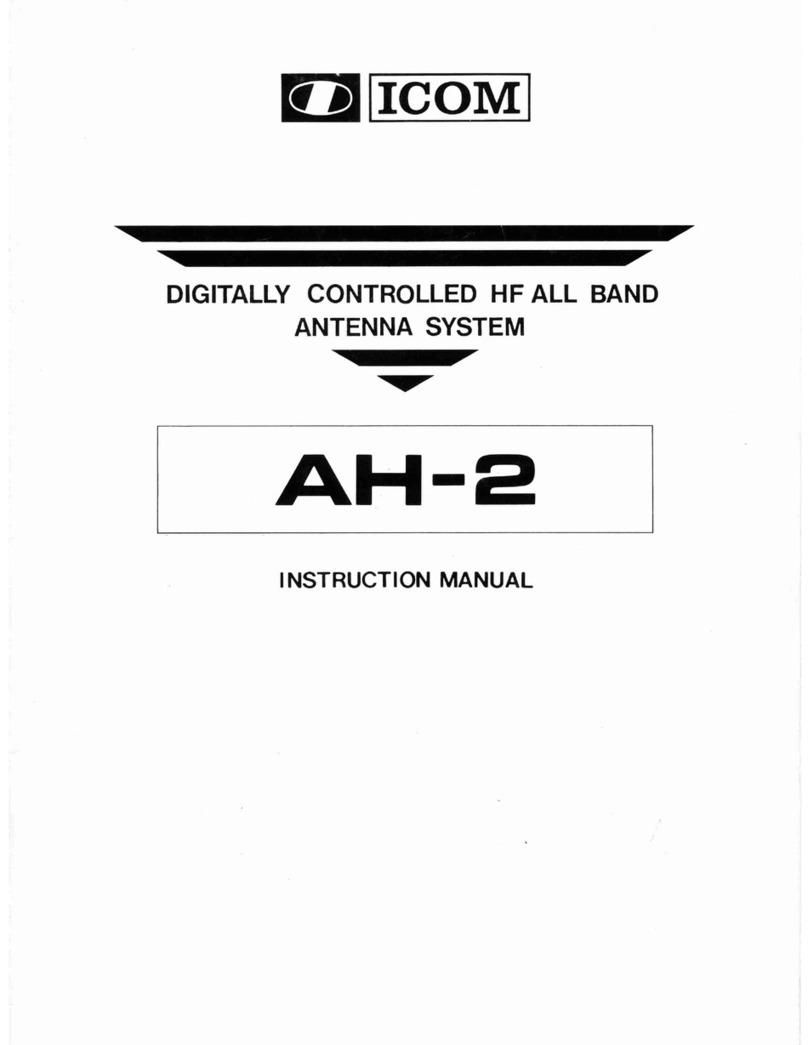WAHL DES AUFSTELLORTS UND BETRIEB
1) Die Abstimmbox darf nicht auf eine Metallfläche gestellt werden. Außerdem muss die Loop-Antenne einen Abstand von
mindestens 50 cm zu Metallgegenständen haben.
2) Platzieren Sie die Loop-Antenne in einer Höhe, die größer als ein Schleifendurchmesser ist, also etwa 1 m.
3) Werden Senden und Empfang durch Objekte im Sichtfeld der Antenne behindert, kann man sie erhöht anbringen.
4) Alle Antennen unterliegen physikalischen Beeinflussungen durch ihre Umgebung. Diese sind auch bei der Wahl der
Betriebsposition zu berücksichtigen. Erwarten Sie z.B. von einer Loop-Antenne in Innenräumen nicht die gleiche
Performance wie im Freien. Ebenso wird eine Antenne in größerer Höhe oft eine bessere Leistung erbringen, da ihr
Sichtfeld nicht beeinträchtigt wird.
5) Bei der Installation in Häusern, deren Dächer mit Asphaltschindeln gedeckt sind, entsteht typischerweise ein Verlust
von etwas mehr als einer S-Stufe, im Normalfall aber nicht mehr als 1,75 S-Stufen.
6) Wird die Antenne in Gebäuden installiert, deren Außenwände z.B. mit Metallgittern als Putzträger oder mit
Aluminiumverkleidungen versehen sind, ist eine ordnungsgemäße Funktion nahezu unmöglich. Wenn es keine
andere Möglichkeit zur Aufstellung der Antenne gibt, dann stellen Sie sie vor das größte Fenster und entfernen Sie
alle Metallabdeckungen in der Umgebung.
7) Die Abstrahlung im Nahfeld der Loop-Antenne erfolgt hauptsächlich in der Ebene der Schleife, nicht im Zentrum. Die
Veränderung der Ausrichtung des Schleifenzentrums zu einer Störquelle kann jedoch dazu beitragen, durch elek-
tronische Geräte verursachte Störungen zu eliminieren.
8) Die Fernfeld-Abstrahlung der Loop-Antenne erfolgt ebenfalls hauptsächlich in der Ebene der Schleife, sie kann aller-
dings durch Metallstrukturen in der Umgebung verändert werden, wodurch die Richtcharakteristik der Antenne negativ
beeinflusst wird.
ABSTIMMHINWEISE
Die Antenne AL-705 verfügt über einen Abstimmknopf am Alpha-Match-Anpassungsglied. Mit diesem schwarzen Dreh-
knopf ist die Antenne auf das niedrigste SWR von 2,5:1 oder weniger auf 10 m bis 40 m abzustimmen.
HINWEIS: Es ist einfacher, die Anpassung und Abstimmung der Loop-Antenne auf 40 m auszuprobieren. Die folgende
Vorgehensweise hat sich in fast allen Situationen als einfachste Methode zur Abstimmung der AL-705 erwiesen:
ABSTIMMEN
1) Nachdem das Koaxialkabel mit dem Funkgerät verbunden wurde, ist die minimale Sendeleistung zu wählen.
2) Den SSB-Modus aufrufen und die Lautstärke am Funkgerät einstellen. Dann den Drehknopf an der Abstimmbox
drehen und dabei auf den lautesten Rauschpegel achten.
3) Anschließend kann mit dem Drehknopf an der Abstimmbox die Feinabstimmung vorgenommen werden.
Das SWR-Meter des Funkgeräts oder eines Antennenanalysators sollte einen möglichst geringen S-Wert anzeigen.
HINWEISE
(Verstimmen durch Handkapazität)
Um die Handkapazität während des Abstimmens auszugleichen, kann das sogenannte „Reverse Tuning“-Abstimm-
verfahren Anwendung finden. Während eine Hand den Drehknopf an der Abstimmbox berührt, stellt man das minimale
SWR ein, z.B. 1,9:1. Entfernt man nun die Hand, wird ein SWR von z.B. 4,3:1 angezeigt. Stellt man anschließend
ein SWR von 4,3:1 ein, während die Hand den Drehknopf berührt, erreicht man ein SWR von 1,9:1, wenn die Hand weg-
genommen wird.
(Abstimmen mit Messgerät, ohne Berührung der Antenne)
Nachdem die Schritte 1) und 2) unter „ABSTIMMEN“ durchgeführt wurden, lässt sich mit einem Antennenanalysator oder
einem SWR-Messgerät (intern oder extern) das niedrigste SWR ermitteln, ohne die Antenne zu berühren. Während man
das SWR auf dem Messgerät beobachtet, ändert man die Frequenz am Funkgerät oder dem Analysator bis das Messge-
rät das niedrigste SWR anzeigt.












